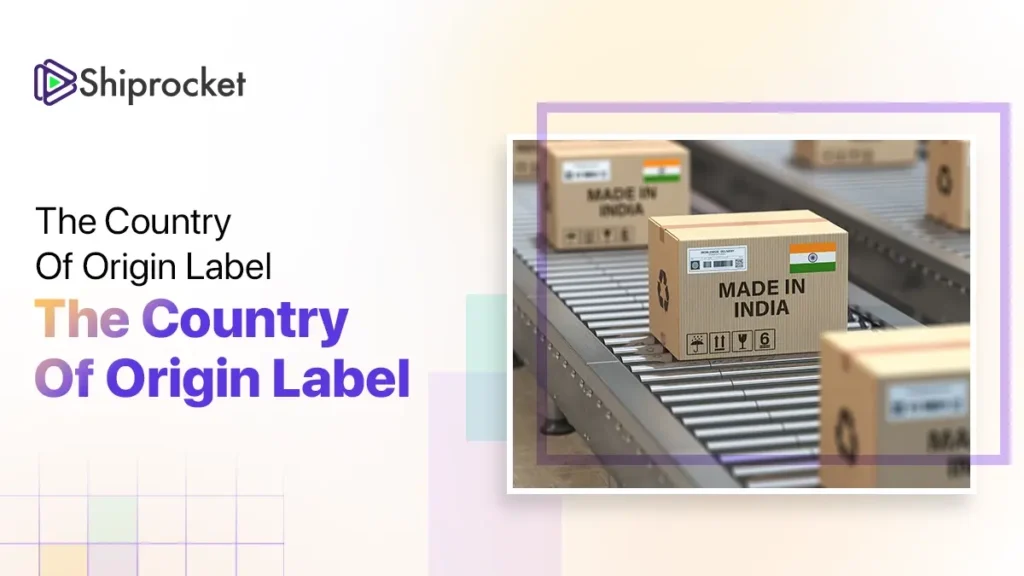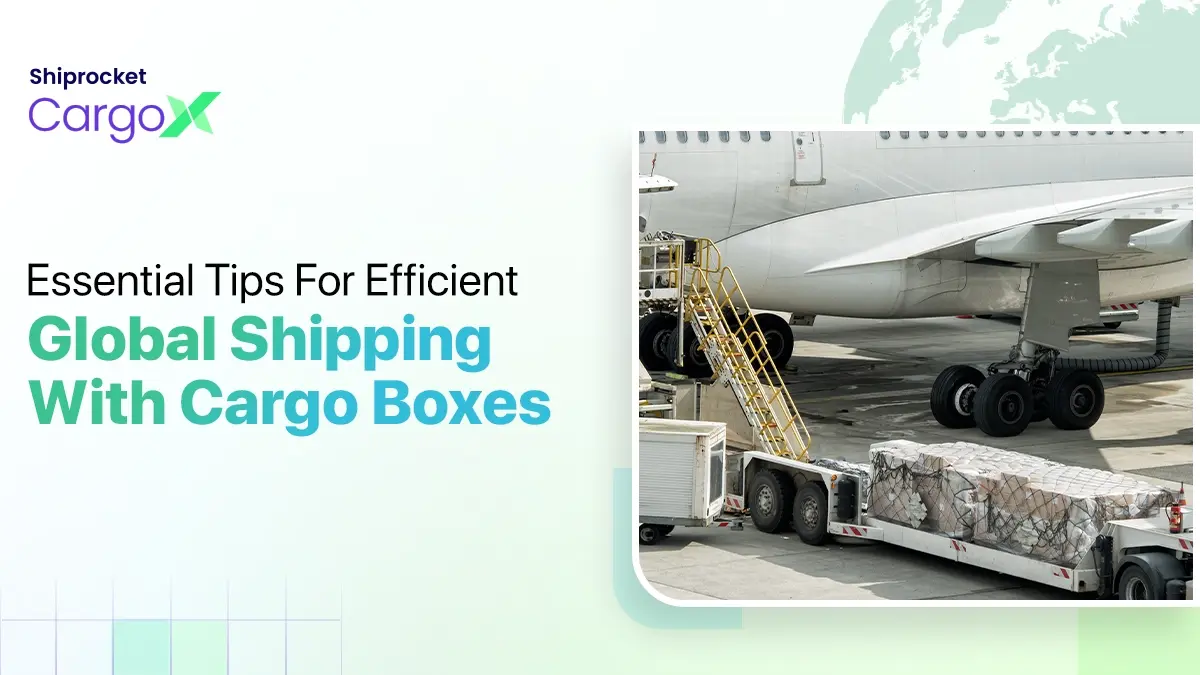Country of Origin: Importance, Methods, & Regulations
- Understanding Country of Origin
- Importance of Country of Origin in Import
- Identifying the Country of Origin: Methods and Considerations
- The Need for Country of Origin Marking
- When to Mark Country of Origin on Imports?
- Country of Origin Labelling Regulations
- Conditions When Country of Origin Marking is Exempted
- Determining Import Duty: Role of Country of Origin
- Conclusion
Understanding the importance and features of the ‘country of origin’ is important for both businesses and consumers when one starts to trade globally. The country of origin marking on an imported product or packaging helps authorities apply relevant tariffs, duties, and customs to the goods. The labelling also informs consumers about the product and makes an informed decision about purchasing or using the product. This article explores the role and importance of the country of origin label in the import market along with its complex nature and influence on the global trading market.

Understanding Country of Origin
In the import process, the country of origin indicates the country where the product was produced, manufactured, or transformed. The country of origin of the goods is important for customs authorities to calculate the taxes and duties to be tagged on the imported goods. If this label is missing while importing the goods, your package might get declined and won’t be able to enter another country.
Importance of Country of Origin in Import
The country of origin is important in the import process for the following purposes:
- Evaluating taxes: The country of origin is important to evaluate or calculate taxes and duties that are applicable as per customs authorities on imported goods as different countries have different customs and tariff rates, trade agreements, etc.
- Regulations: Knowing the country of origin helps maintain import regulations, including safety standards, health rules, environmental restrictions, etc. It is important to maintain consumer safety and meet safety standards. The trades that do not follow such regulations result in penalties, delays, or denials for the entry of the goods.
- Trading policies: The government of each country has some trading policies and regulations for every country of origin. Knowing the country of origin helps balance trade and protect existing industries from any unnecessary competition.
- Consumer protection: The country of origin mentioned on the labels provides valuable information to consumers. This increases transparency for consumers and helps them make informed decisions.
- Anti-dumping measures: It is important to identify and apply anti-dumping taxes on products that are sold below their market value.
Identifying the Country of Origin: Methods and Considerations
The process of identifying the country of origin of a product involves various methods and considerations to achieve accuracy. These methods and considerations include:
Methods to identify the country of origin:
- Wholly produced criterion: This method applies to products that are obtained or produced in one country only. For example, agricultural products are harvested in one country, or animals are born and raised in one country.
- Substantial transformation criterion: This method involves materials from different countries. The country of origin of the product in this method is determined as per the last country in which the substantial transformation has occurred. The goods under this transformation must result in a new product with a different name, character, usage, etc.
- Regional value content: In this method, the percentage of the product’s value is calculated as per the country it is produced. If the local content meets or extends the threshold, then the country can be known as the country of origin.
- Change in tariff classification: This method involves the Harmonised System (HS) codes to identify the country of origin. In the process of production, if the product’s tariff classification has changed substantially, then the country of origin will change to the country where the change has occurred.
- Specific processing rules: Certain goods may have production steps to be completed in a particular country. And then that country is qualified as a country of origin.
Considerations to identify the country of origin:
- Documentation: The importers must have the necessary documentation to prove the country of origin of the goods at customs clearance. This documentation can include the certificate of origin, bills, invoices, landing bills, etc.
- Compliance with trade agreements: There are different trade agreements, like free trade agreements (FTAs), which have specific rules of origin to be adhered to.
- Product-specific rules: Some products have specific rules to identify their country of origin. Electronics, textiles, etc. have different origin criteria to be followed.
- Manufacturing process: It includes an understanding of manufacturing, supply chain, and different stages of the production process to determine where substantial transformations have occurred.
- Legal requirements: Different countries have different legal requirements for determining the country of origin of goods. Thus, importers must look at the specific rules and requirements for importing goods to different countries.
The Need for Country of Origin Marking
The country of origin marking on goods is important because of various factors that affect businesses, consumers, authorities, etc. Some of the significant reasons why country of origin marking is important are:
- Consumer information: The country of origin marking informs consumers transparently about the product and where it was manufactured. This transparency helps consumers make informed decisions about the goods they are purchasing.
- Regulatory compliance: Many countries have mandated the labelling of goods with their country of origin or imported products. This marking is important for compliance with the regulations of different countries and making sure that products meet the safety and health standards of the importing country.
- Trading policies: The country of origin is important to calculate the trade taxes and duties applicable. Accurate marking helps the customs department apply the correct taxes and duties as per the trade policies and agreements.
- Proof of authenticity: Country of origin marking helps customs and consumers identify the authenticity of the products. These products include luxury goods, pharmaceuticals, high-value goods, etc.
When to Mark Country of Origin on Imports?
The marking of the country of origin on imports is done at different stages to make sure that they comply and help in a smooth trading process. Here are some stages where the marking is commonly done:
- At the time of production, producers or manufacturers generally mark the country of origin on goods after production. This marking is permanent and visible throughout the product’s life.
- Before exporting: Before the products get shipped or exported, the country of origin is marked on the product and packaging to comply with the regulations of the importing country. Marking at this step is important to avoid any delays or rejections.
- If re-processed: If the goods are re-packaged, re-processed, or have undergone any substantial transformation, then the country of origin marking needs to be updated.
Country of Origin Labelling Regulations
Labelling regulations for the country of origin depend on the different countries and the types of products. However, some common labelling regulations are followed for marking countries of origin. These include:
- The country of origin label should be clear, visible, and easily readable for consumers.
- The label should be permanent and durable and should not get removed or faded throughout the product’s life.
- The country of origin marking should be done in the official language of the importing country so that it is easily understandable for consumers.
- Country of origin labels for some specific products have specific requirements that should be complied with. For example, for food products, the origin of the primary ingredient should also be mentioned, and for textiles, the country where the fabric is produced and where it is assembled should be mentioned, etc.
- The country of origin labelling should be clear and accurate as per free trade agreements (FTAs) or other trade agreements.
- The importers must have the necessary certificates to prove the country of origin of the goods.
Conditions When Country of Origin Marking is Exempted
The country of origin is generally required to import or export goods. But there are some conditions under which the country of origin is exempt. The exemptions are different for different countries as per their customs and other regulatory authorities. However, some of the common conditions under which the country of origin marking is exempted are:
- If the items are too small to mark the country of origin on them, like accessories.
- Products that are not for consumers to use directly and in which the country of origin is not visible.
- Raw materials like grains, timber, minerals, etc., or bulk shipments that are further processed may not require country-of-origin marking.
- The goods that are imported into the country for trade shows or exhibitions do not require marking as they won’t be staying in the country permanently.
- Products that are intermediates or assemblies that are used to make the final product do not need country of origin marking every time.
- Bulk food items and fresh agricultural products like fruits, vegetables, and seafood are exempt from marking as it is impractical.
- Goods that are imported to be used by the government for diplomatic purposes are also exempt from country of origin marking.
- Products with reusable packaging and containers, or if the packaging is not to reach consumers directly, might not need the country of origin marking.
Determining Import Duty: Role of Country of Origin
The country of origin marking plays an important role in determining the import duty for the goods:
- The import duty applicable to the goods is determined as per the country of origin label on the goods.
- Goods imported from different countries have different importing duties applicable to them as per different trade agreements complied with.
- There are anti-dumping duties and taxes applicable to some imported goods as per their country of origin, which affect the domestic industries and businesses of the country.
- The country of origin marking helps customs authorities apply duties to imported goods.
Conclusion
The country of origin label works as a guiding light in the market of international trading, including guidance for importers, regulatory bodies, and consumers. Country of origin labelling has a significant influence on the evaluation of taxes, safeguarding the interests of consumers, shaping trade, etc. As we get to know the complexities of import duties and regulatory compliance, the importance of the country of origin mark becomes very important. This label not only tells us about the history of the product but also builds trust and transparency for consumers. So let us all embrace and accept the country of origin as more than just a label and as a path through which the complexity of international trade is comprehended and negotiated.






